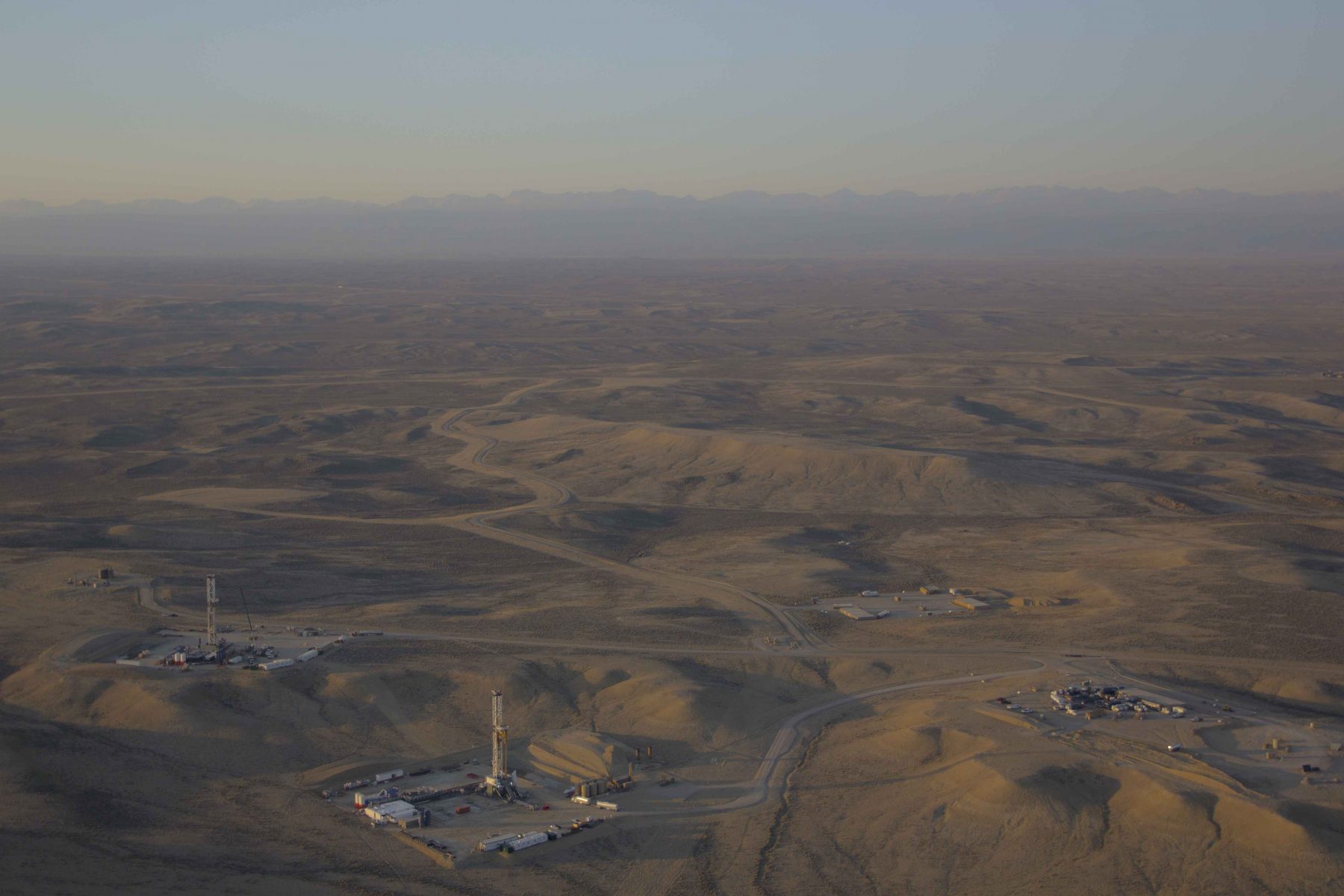Wyoming is changing, faster now than any of us could have predicted even six months ago. In our last issue of Frontline, we addressed the reality of climate change and what it means for Wyoming’s future. Climate change is not a separate issue, but one that is deeply intertwined with all aspects of our work — from protecting our state’s big game populations to reducing harmful air emissions, to safeguarding our clean water, public lands, and ultimately our way of life. And if we are to succeed in our mission, we must advocate for policies that directly confront the real and growing threat of human-caused climate change.
Wildlife and migration
As you know, the Wyoming Outdoor Council’s wildlife work over the last several years has focused on protecting Wyoming’s big game migration corridors — and for good reason. The science is clear about the crucial role these corridors play in maintaining ungulate populations that in turn support our state’s recreation economy and outdoor heritage. Yet, a changing climate could easily undermine many of these hard-fought efforts. For one, changing precipitation patterns and drought increasingly threaten the ability of animals to “surf the green waves” that connect their seasonal habitats. Wyoming has seen warming temperatures and drought intensify over the last 20 years and most experts agree that, at least for our state, this trend only gets worse. If we are to ensure that our state’s wildlife remain protected for the long term, we must also consider how these populations stay resilient and capable of adapting to these changes, while taking responsibility to mitigate the most damaging forecasted climate scenarios.
Clean air
It’s hard to talk about clean air and the policies necessary to maintain it without acknowledging the relationship between climate change and the greenhouse gases at the heart of Wyoming’s air quality problems. We often think of natural gas as a cleaner fuel than coal — and it is, if we minimize the amount of fugitive emissions that leak into the atmosphere as it is produced and processed. The Outdoor Council has repeatedly called on Wyoming’s Department of Environmental Quality and the oil and gas industry to address air quality concerns, by advocating improved Leak Detection and Repair requirements for oil and gas infrastructure and opposing rollbacks of critical methane capture rules. With natural gas expected to play a major role in energy production for years to come, Wyoming must keep on raising the bar for air quality standards not only to protect our health, but to reduce our greenhouse gas footprint and stay competitive in energy markets that are favoring cleaner energy.
Clean water
One of the most alarming aspects of climate change in Wyoming is its impacts on our arid state’s already limited water resources. If current projections for warming hold, Wyoming could see significant loss of coldwater fisheries and native trout habitat by the end of this century due to increased water temperatures and loss of instream flows as our snowfields and glaciers shrink. These conditions exacerbate water quality concerns the Outdoor Council has been working hard to address, such as reducing harmful E. coli concentrations in our waterways. Warming temperatures are also projected to increase the amount of rainfall as opposed to snow, which reduces the amount of stored water potential available in the summer and fall. This spells increasing challenges and conflicts for ranchers, farmers, cities, recreators, and, again, our wildlife.
Our public lands
Advocating responsible energy development has been at the heart of the Outdoor Council’s public lands policy work — whether that’s fighting back against efforts to privatize public lands, urging the protection of special landscapes, or watchdogging development in crucial wildlife areas. We’ve recently reported on the rampant and largely speculative oil and gas leasing taking place across large swaths of the state. Not only do these lease sales come at the expense of other uses of our public lands, for those that are developed, they come at the expense of the quality of the environment that future generations will inherit. Remarkably, nearly one quarter of all greenhouse gas emissions produced in the United States originate from public lands — lands that are supposed to be managed with both current and future generations in mind. This is not sustainable. To the greatest extent possible, our public lands should be managed in ways that mitigate climate change and help surrounding communities be more resilient into the future.
Confronting climate change also means addressing our economy
Climate change is a reality that ripples through the conservation issues the Outdoor Council has been engaged in for decades. It is something that our founder, Tom Bell, understood early on and urged us to address directly.
If we cannot find ways to address and mitigate this looming crisis and do our part as a state, our conservation work in all of our traditional program areas will fall short.
Tackling climate issues in Wyoming will require hard and honest conversations about the dependency of our state’s economy on fossil fuels, and it will require creativity and investment into bold new ideas. The new front line for conservation means wading into policy issues that, at least on the surface, seem less directly tied to it — like helping communities transition from fossil fuels, promoting economic diversification, and supporting new sources of state revenue. As daunting and intimidating as this might feel, we believe it’s critical. Our state’s economy and conservation policies are interconnected. Wyoming’s outsized influence on climate change means that the policies and actions we take in our communities can have national — even global — impacts.
John
Burrows
Energy and Climate Policy Director
Staff

